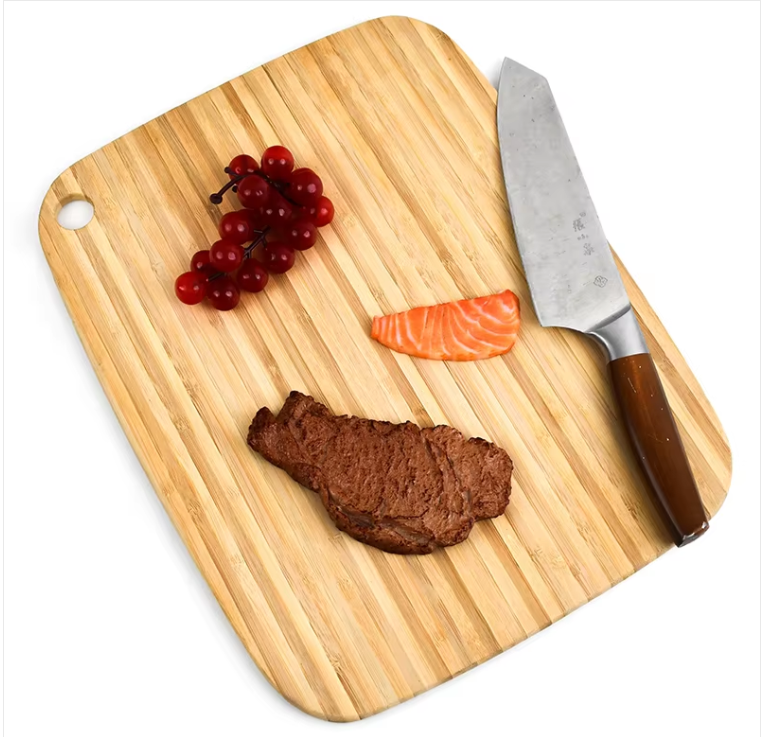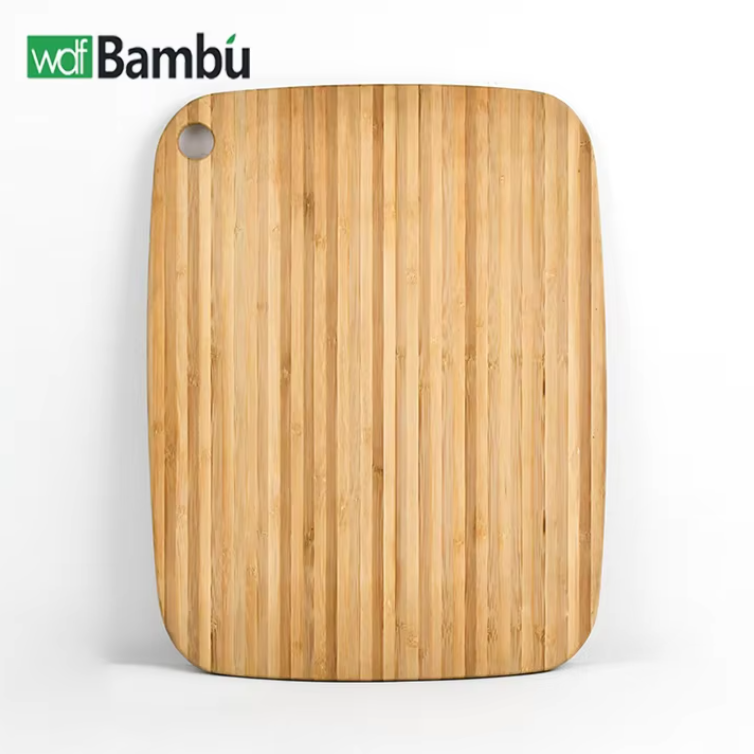Wichtige Richtlinien zur Pflege von Holzschneidbrettern
Holzschneidebrett sind wertvolle Küchenutensilien, die Funktionalität mit natürlicher Schönheit verbinden. Bei richtiger Pflege können diese vielseitigen Hilfsmittel mehrere Generationen lang verwendet werden und gleichzeitig eine sichere und ansprechende Arbeitsfläche für die Lebensmittelzubereitung bieten. Das Verständnis der richtigen Pflege von Holzschneidbrettern ist entscheidend, um deren Lebensdauer zu verlängern, die Lebensmittelsicherheit zu gewährleisten und ihre ästhetische Ausstrahlung zu bewahren.
Gut gewartet holzschneidbrettset dient sowohl als praktisches Küchenwerkzeug als auch als Investition in Ihr kulinarisches Erlebnis. Die natürlichen Eigenschaften von Holz machen es von Natur aus antibakteriell, doch dieser Vorteil bleibt nur erhalten, wenn das Holz richtig gepflegt und gewartet wird. Lassen Sie uns umfassende Ansätze zur Pflege dieser wichtigen Küchenutensilien betrachten.

Tägliche Reinigungs- und Wartungspraktiken
Richtige Wäsche-Techniken
Die Grundlage für die Pflege von Holzschneidbrettern beginnt mit der richtigen Reinigung nach jedem Gebrauch. Entfernen Sie zunächst mit einem Teigabstreifer oder der stumpfen Seite eines Messers alle Speisereste. Anschließend das Brett mit warmem Wasser und mildem Spülmittel abwaschen, wobei das Holz nicht eingeweicht werden darf. Zum Reinigen der Oberfläche verwenden Sie einen weichen Schwamm oder ein Tuch und reinigen Sie sanft, aber gründlich.
Nach dem Waschen das Brett sofort mit einem sauberen Küchentuch trocknen. Lassen Sie Ihr Holzschneidbrett niemals an der Luft trocknen oder in Wasser einweichen, da dies zu Verformungen und Rissen führen kann. Das Aufstellen des Bretts auf seiner Kante in einem gut belüfteten Bereich hilft, eine vollständige Trocknung zu gewährleisten.
Lagerung zwischen den einzelnen Verwendungen
Eine sachgemäße Aufbewahrung ist entscheidend für die Pflege von Holzschneidbrettern. Bewahren Sie die Bretter an einem kühlen, trockenen Ort auf, fernab von direktem Sonnenlicht und Wärmequellen. Vermeiden Sie es, sie über einen längeren Zeitraum flach an der Arbeitsplatte anliegend aufzubewahren, da dies Feuchtigkeit einschließen kann. Verwenden Sie stattdessen Schneidbrettständer oder lehnen Sie sie senkrecht mit ausreichend Luftzirkulation an.
Falls Sie mehrere Bretter in Ihrem Set haben, sollten Sie diese nicht direkt übereinander stapeln. Verwenden Sie Abstandshalter oder bewahren Sie sie senkrecht mit ausreichend Platz zwischen den einzelnen Brettern auf, um Feuchtigkeitsansammlungen und potenzielles Verziehen vorzubeugen.
Tiefenpflegende Behandlungen
Monatliche Öl-Anwendungen
Regelmäßiges Öl einreiben ist wesentlich für die Pflege und Wartung von Holzschneidbrettern. Speiseölfreies Mineralöl ist die bevorzugte Wahl, da es nicht ranzig wird und hervorragenden Schutz bietet. Tragen Sie eine großzügige Menge Öl auf alle Oberflächen des Bretts auf, einschließlich der Kanten, und lassen Sie es über Nacht einziehen. Diese Behandlung sollte bei häufig verwendeten Brettern monatlich durchgeführt werden.
Die Häufigkeit der Ölbehandlung kann je nach Nutzung und klimatischen Bedingungen variieren. In trockeneren Umgebungen oder bei starker Beanspruchung müssen Sie Ihre Bretter möglicherweise häufiger ölen. Achten Sie auf Anzeichen wie matte oder trockene Stellen auf der Holzoberfläche, die darauf hindeuten, dass eine weitere Behandlung erforderlich ist.
Saisonaler Brett-Butter-Behandlung
Brettbutter, eine Mischung aus Mineralöl und Bienenwachs, bietet eine zusätzliche Schutzschicht für Ihre Holzschneidebretter. Wenden Sie diese Behandlung saisonbedingt oder alle paar Monate an, um eine langlebigere Barriere gegen Feuchtigkeit zu schaffen. Das Bienenwachs hilft, die Holzfaser zu verschließen und verlängert die Wirkungsdauer der Ölbehandlung.
Um Brettbutter aufzutragen, stellen Sie sicher, dass Ihr Brett sauber und vollständig trocken ist. Erwärmen Sie die Butter leicht, um sie zu weichen, und tragen Sie dann eine dünne Schicht mit einem sauberen Tuch auf. Lassen Sie sie über Nacht einziehen und polieren Sie am nächsten Tag überschüssige Butter mit einem sauberen Tuch ab.
Häufige Probleme und Reparaturen beheben
Oberflächliche Kratzer und Markierungen
Leichte Kratzer und Messerspuren sind bei Holzschneidebrettern normal und entstehen durch Pflege und Gebrauch. Für oberflächliche Kratzer kann leichtes Schleifen mit feinem Schleifpapier (220er Körnung oder höher) helfen, die Oberfläche zu glätten. Schliff immer in Richtung der Holzmaserung durchführen und nach dem Schleifen das Brett gründlich reinigen und ölen.
Tiefe Rillen oder Schnitte erfordern mehr Aufmerksamkeit, da sich dort Bakterien ansammeln können. Diese können mit Schleifpapier mittlerer Körnung behandelt werden, gefolgt von immer feineren Körnungen, bis die Oberfläche glatt ist. Danach muss das Brett gründlich mit Öl eingerieben werden.
Verhütung und Behandlung von Verformungen
Verformungen entstehen meist durch ungleichmäßige Feuchtigkeitsbelastung oder falsche Aufbewahrung. Um Verformungen vorzubeugen, sollten Schneidebretter nach der Reinigung stets gut getrocknet und richtig aufbewahrt werden. Falls sich leichte Verformungen zeigen, können diese manchmal behoben werden, indem das Brett flach liegend für mehrere Tage in einem klimatisierten Raum mit Gewichten beschwert wird.
Bei starker Verformung ist eine professionelle Wiederherstellung erforderlich. Dennoch ist die Vorbeugung durch angemessene Pflege des Holzschneidebretts stets der beste Ansatz. Die gleichmäßige Nutzung beider Seiten des Bretts sowie eine gleichmäßige Feuchtigkeits- und Ölanwendung können helfen, Verformungen vorzubeugen.
Häufig gestellte Fragen
Wie oft sollte ich mein Holzschneidebrett ölen?
Für regelmäßig genutzte Schneidebretter sollte monatlich Mineralöl angewendet werden. Seltener genutzte Bretter benötigen möglicherweise nur alle 2–3 Monate eine Ölanwendung. Achten Sie auf Anzeichen von Trockenheit, wie helle Stellen oder ein stumpfes Aussehen, die anzeigen, dass eine Ölanwendung fällig ist.
Kann ich Olivenöl oder andere Speiseöle auf meinem Schneidebrett verwenden?
Die Verwendung von Speiseölen zur Pflege von Holzschneidebrettern ist nicht empfehlenswert. Diese Öle können mit der Zeit ranzig werden und unangenehme Gerüche verursachen. Verwenden Sie stattdessen spezielles Mineralöl in Lebensmittelqualität oder speziell formulierte Schneidebrett-Öle, die nicht ranzig werden.
Welche Anzeichen zeigen, dass mein Schneidebrett ausgetauscht werden muss?
Ziehen Sie den Austausch Ihrer Schneidematte in Betracht, wenn sie tiefe, nicht reparierbare Risse aufweist, die Bakterien ansammeln können, erhebliche Verformungen, die sie instabil machen, oder wenn sich ein ständiger Geruch entwickelt hat, der auch nach der Reinigung nicht verschwindet. Regelmäßige Pflege kann die Lebensdauer Ihrer Matte erheblich verlängern, aber irgendwann muss jede Matte ersetzt werden.



 Startseite
Startseite